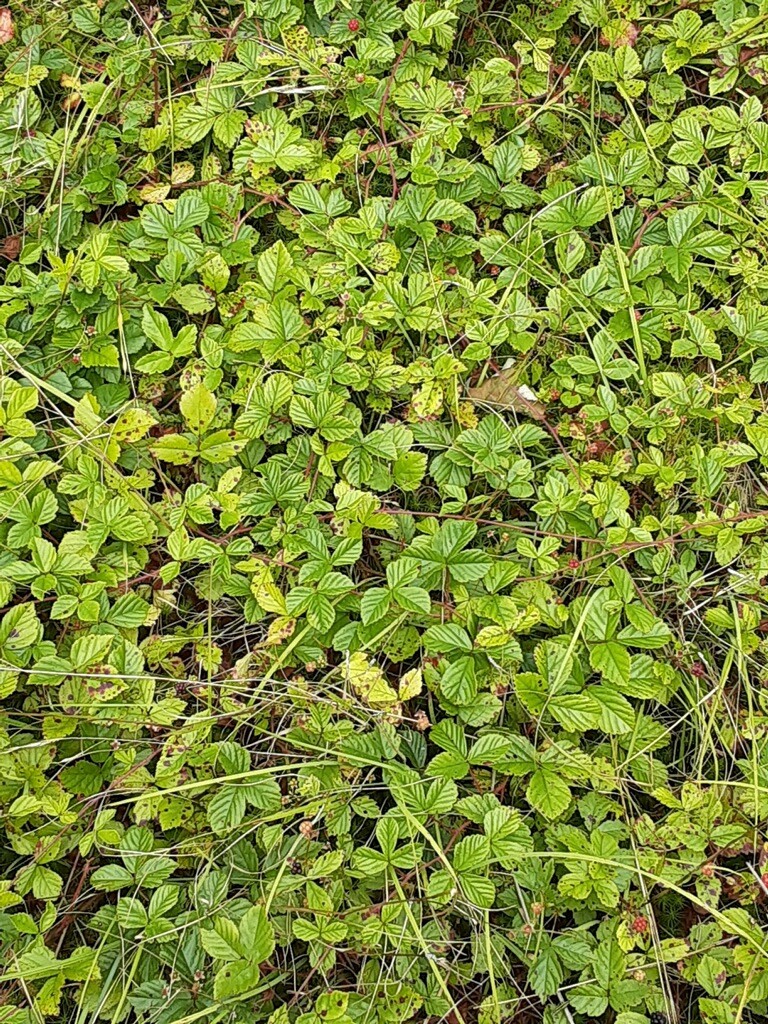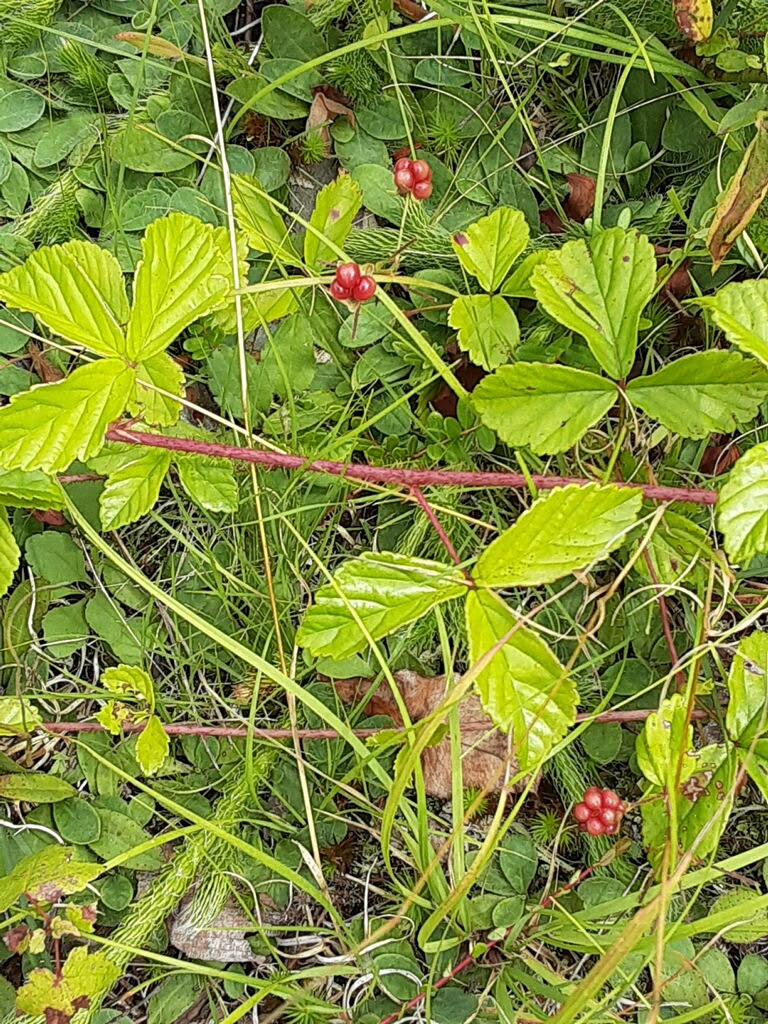By Susan Sprout
The trailing, woody stems of this native plant like to grow sprawled out across my favorite bog. Hiking in is like walking on a thick carpet.
Their shiny green leaves of three won’t raise welts though to some folks, they may resemble poison ivy.

Swamp Dewberry or Bristly Dewberry (Rubus hispidus) is a member of the Rose Family – like the other berries we love to eat during the summer. Unfortunately, the ripe fruit of Dewberry doesn’t taste that great to humans. Song birds, game birds, other mammals, yes. To us, the taste is quite sour.
The small, white, five-petaled flowers have finished blooming by now, and the ones pollinated by small bees and flies have grown into small, individual druplets that are clumped together to form the aggregate fruits we call Dewberries! They start out white, then green, then red and finally purplish-black when totally ripe. You may find all of these colors at one time or another on their slender and bristly red twigs.
Look for swamp Dewberries growing where the soil is acid and damp and the sunlight is dappled. Their tendency to form dense thickets also provides nesting habitat and protective cover for birds and smaller animals. The favor is returned when seeds of the fruits are dispersed into new areas.


